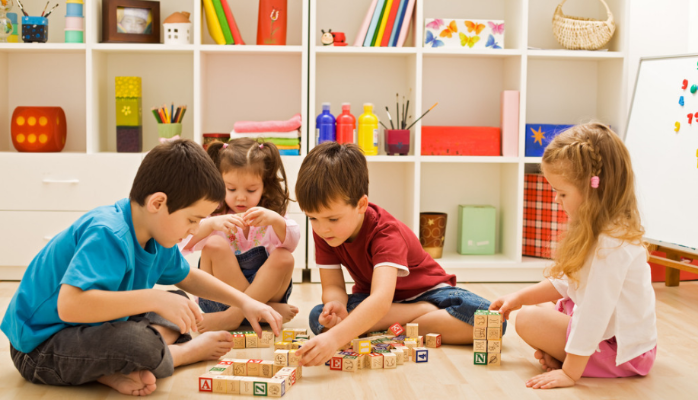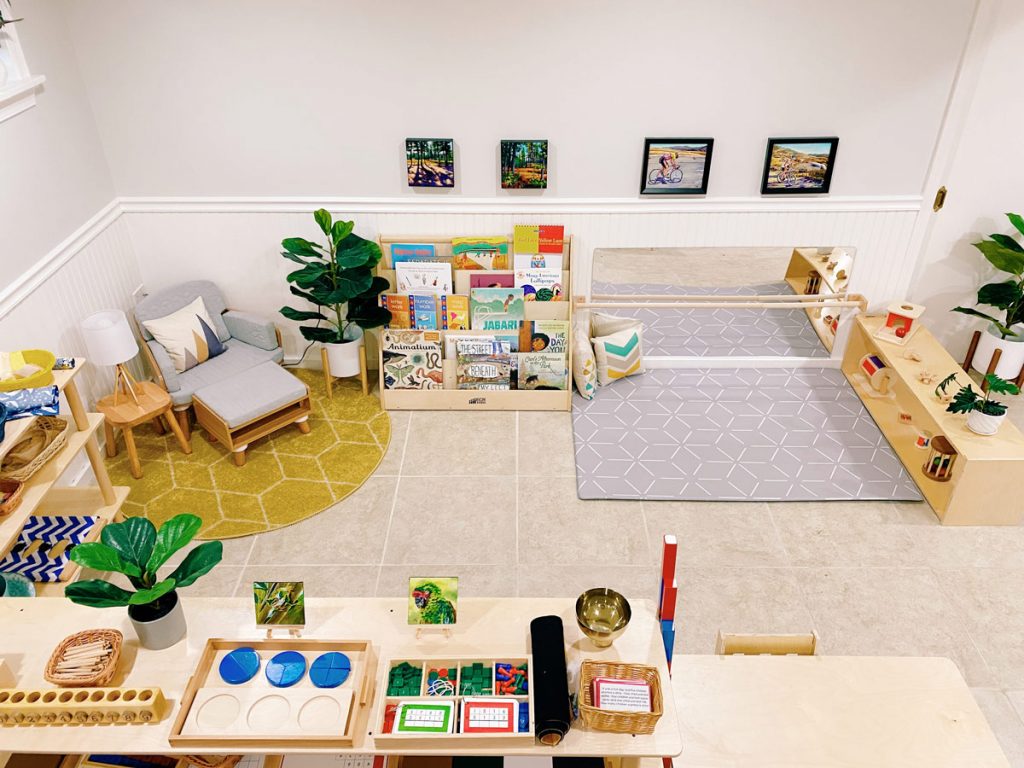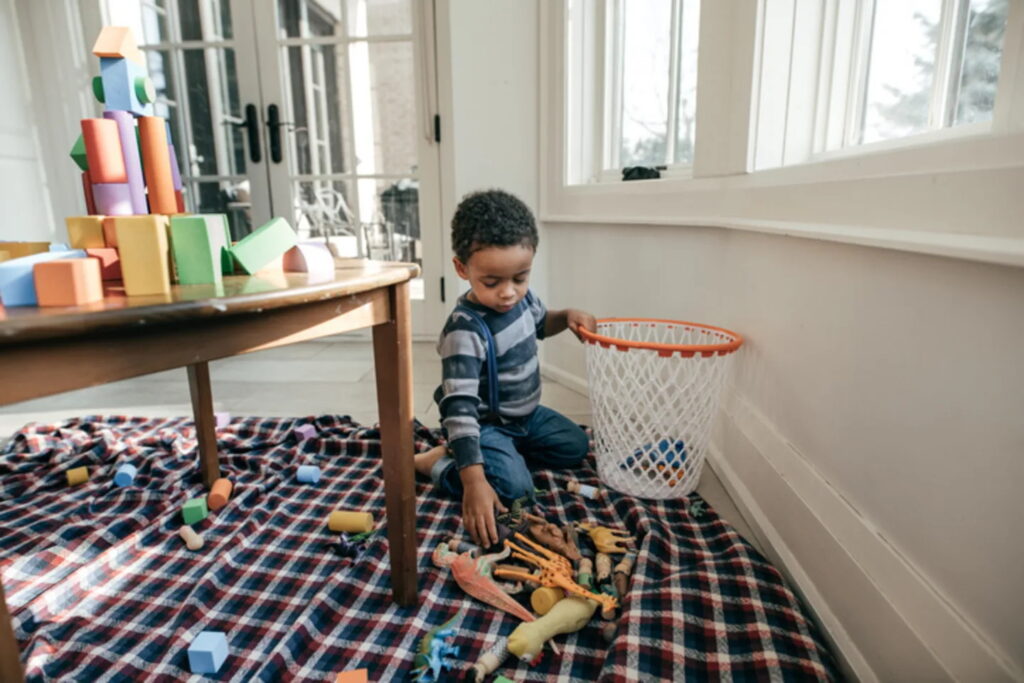As we are approaching Christmas. I wanted to share with you some insights about toys.
Most parents, when they discover Montessori, want to sort the toys they already have.
Surveys have shown that a typical child owns 238 toys in total, however parents think they play with just 12 ‘favourites’ on a daily basis, which makes up just five per cent of their toys.
If you feel that your child has too many toys, then check my tips to sort them and to keep the ones the most in line with Montessori.
Bring all the toys in the same room:
This first step is important. By bringing all the toys that you have around the house (including the ones out of rotation, in your storage space), you will have a clear view of the sheer amount of toys you have gathered. It’s often a wake up call!
If it feels too daunting, try to gather the toys by category: all the baby toys, all the children’s books (yes I include them in the toy’s category), all the outdoor toys, all the building toys, and so on… Then sort one category at a time.
Discard:
Even if it is only the beginning of the process, you might be able to discard and to reduce the pile considerably:
Obviously, some of those toys can be donated.
- Broken toys
- Incomplete toys
- Character toys or too fantasy based
- Toys that promote violence
- Battery operated toys
- Toys that you were pressured to buy
- Toxic toys (if not sure about the safety, discard)
- Too complicated or too fragile to manipulate
- Highly stimulating toys (those that do too many things at once)

- Beloved toys: the toys they sleep with, the toys they remember receiving from their birthday, …
- Open ended toys: not considered a Montessori toy with a clear purpose but those toys at home have so much value! Keep blocks, scarves, boxes, …
- Toys that encourage outdoor play
- Art & crafts materials
- Toys that teach one thing at a time: basically, the ones you would say are a Montessori toy/material.
- Toys and games that promote cooperation: keep the competitive games for when your child will be in the reasoning stage, after 6 years old.
- Toys that promote imagination (might not be the character toys as those ones are fixed)
- Toys that refine the 5 senses
- Books obviously but books are not toys (and it’s a big category so you may want to refine it as well)
- For under 6: more toys based on reality
Obviously, it makes sense to reduce each category in a manageable quantity. The number of toys in each category will depend on your own space, your own child, if you have more than one child and so on, if you home-educate or not, …
When I notice that my children cannot tidy up (they are in the second plane so more able to tidy up by themselves), I put some of they toys in storage and reduce the amount they can access.
Rotate
- Multiple of one kind
- Store away toys for the next level of development
- Rotate according to the seasons
- Rotate according to interests
- Store away if you are not sure you want to keep the toy, if not missed, discard after a while.

- Display between 6 to 12 toys/materials/activities
- It’s not a hard rule! Start small and add more.
- Display incomplete with pieces in a basket next to the puzzle or stacking toy – this is the way for babies and toddlers
- Display the material in its complete stage for the 3 to 6 years old (and demonstrate how to complete the activity)
- Toys must be on view not in a toy box. Think shelves, top of coffee table, mats on the floor.
- Reduce sets to a manageable level (half of a duplo set, half of a train set…)
Last tips:
- You don’t have to get rid of all your plastic toys
- You don’t have to replace everything by a wooden/natural version
- Start with what you have
- Homemade and DIY will do!
- It’s not because it says Montessori that it is Montessori friendly/aligned
- Re purpose containers, shoe box lid, vegetable baskets as trays and baskets
- Don’t be obsess by the shelfie!
- Observe your child and set up activities based on your child!
I hope those tips are useful! I will share how to choose toys in line with Montessori in a future blog post!

